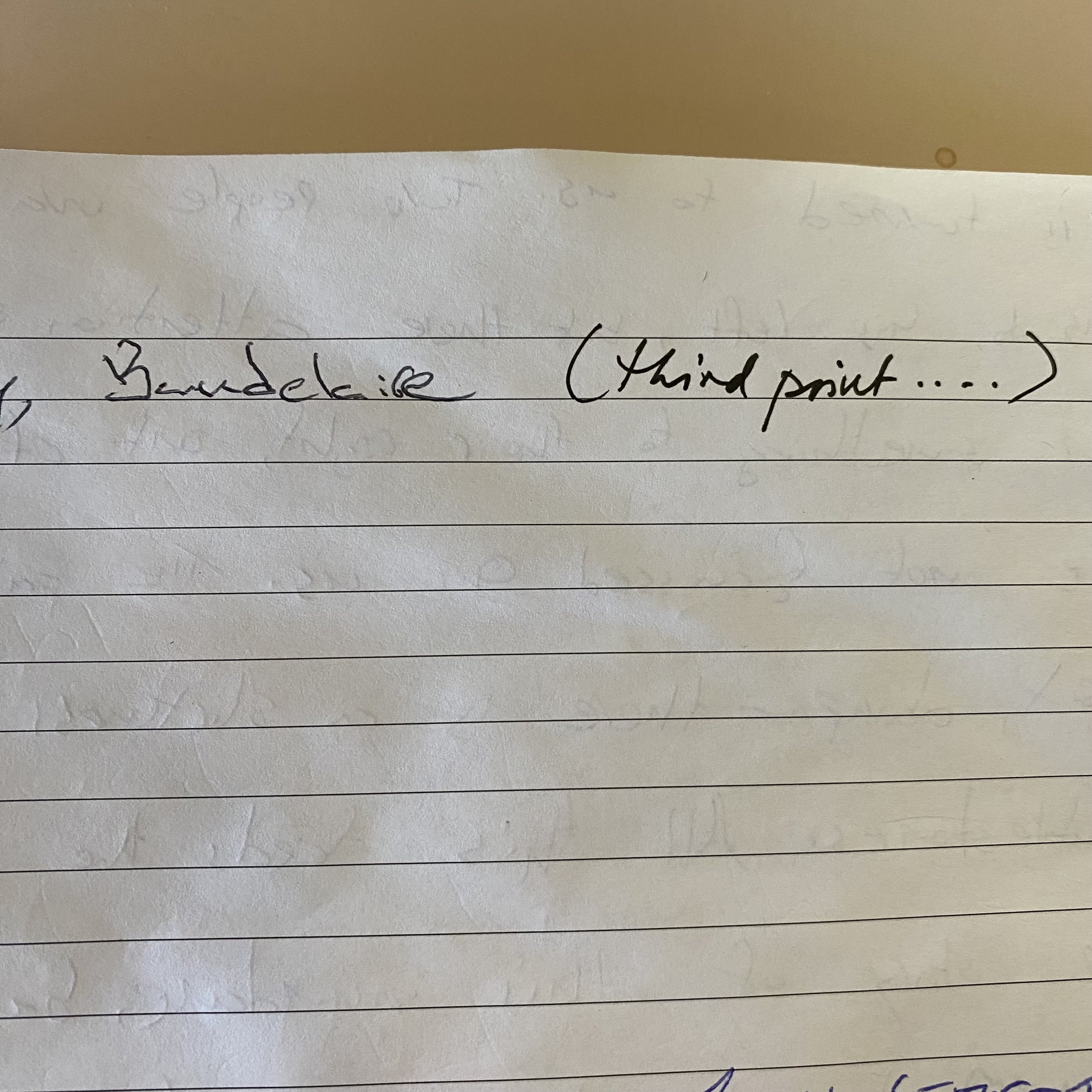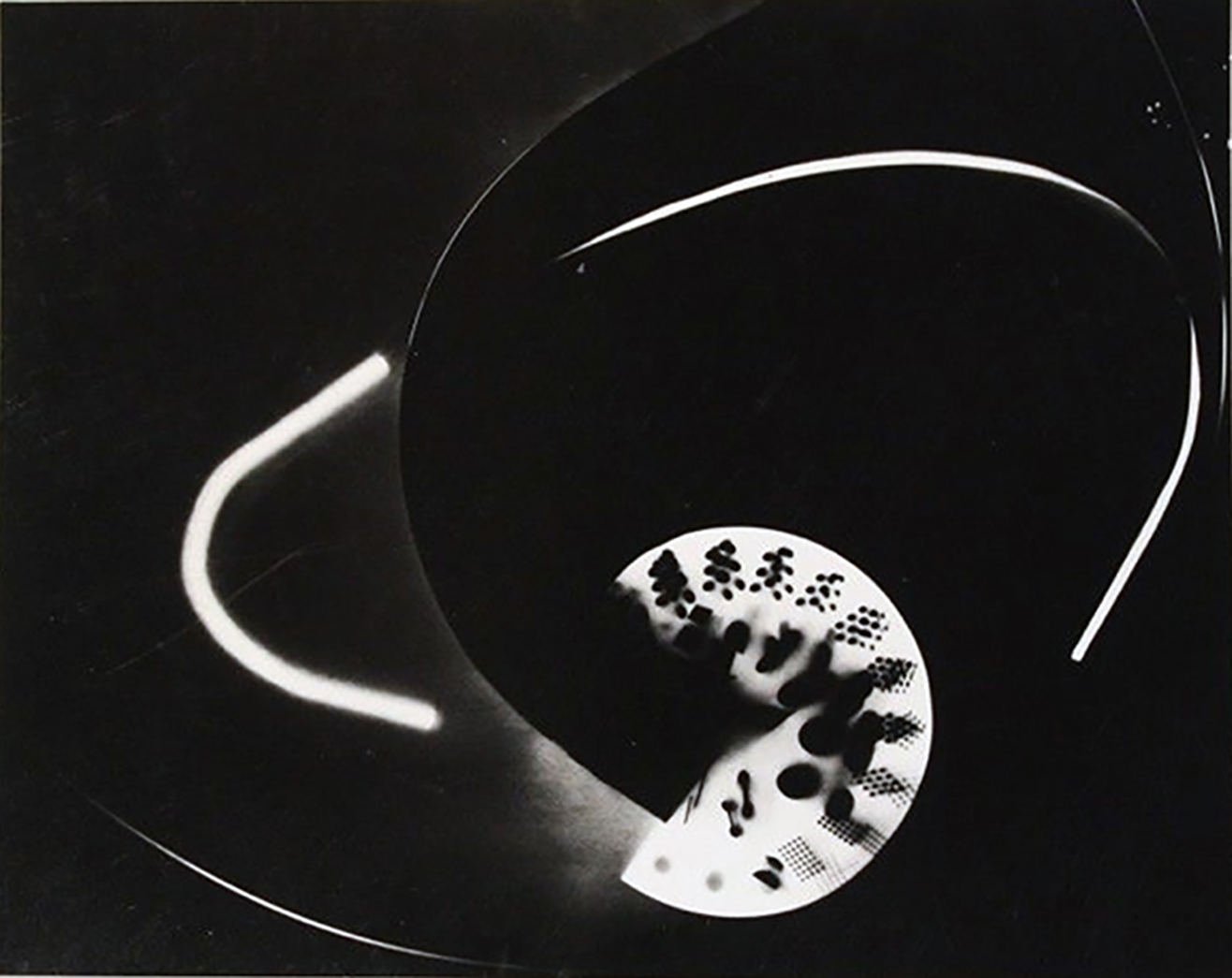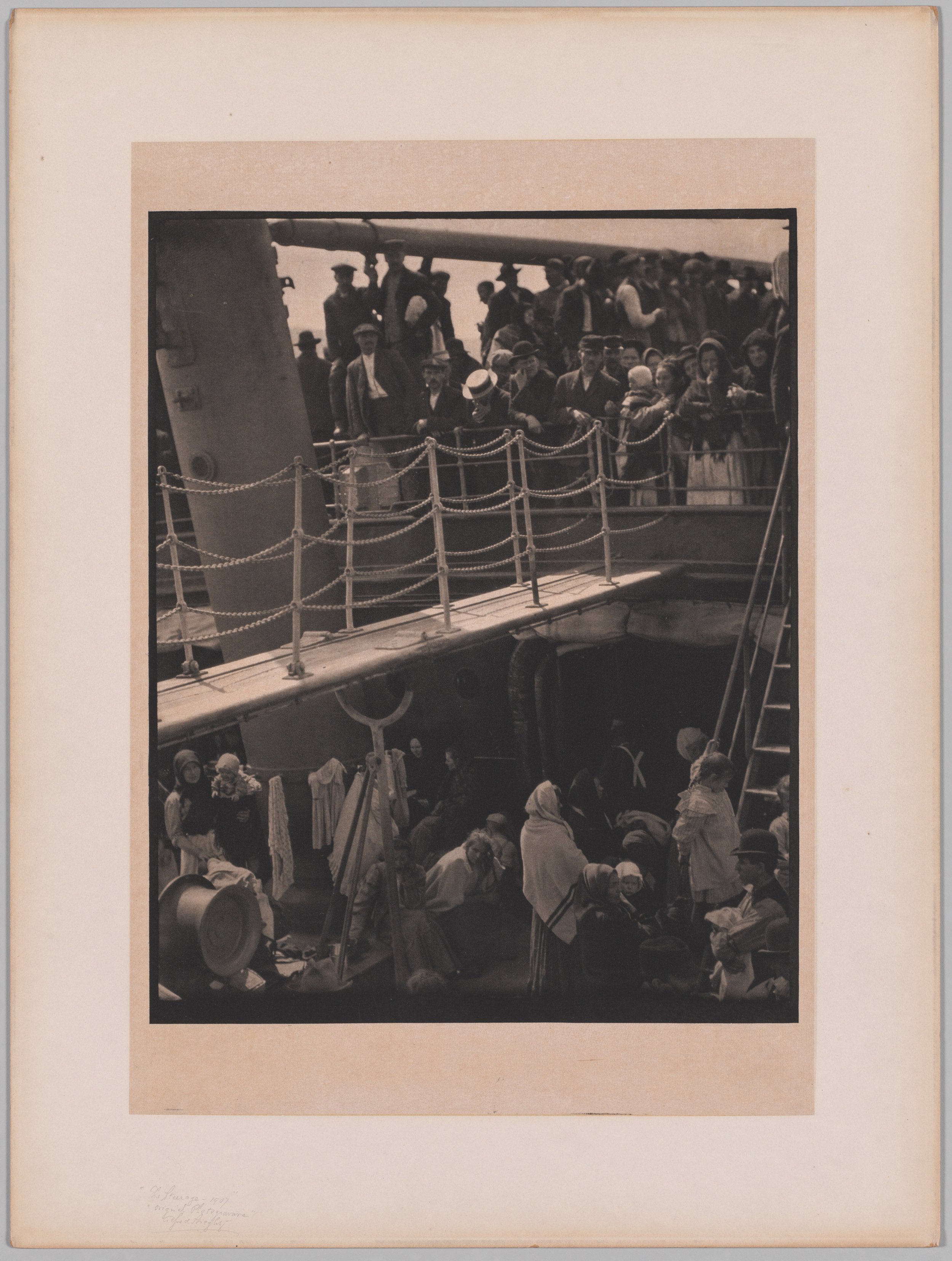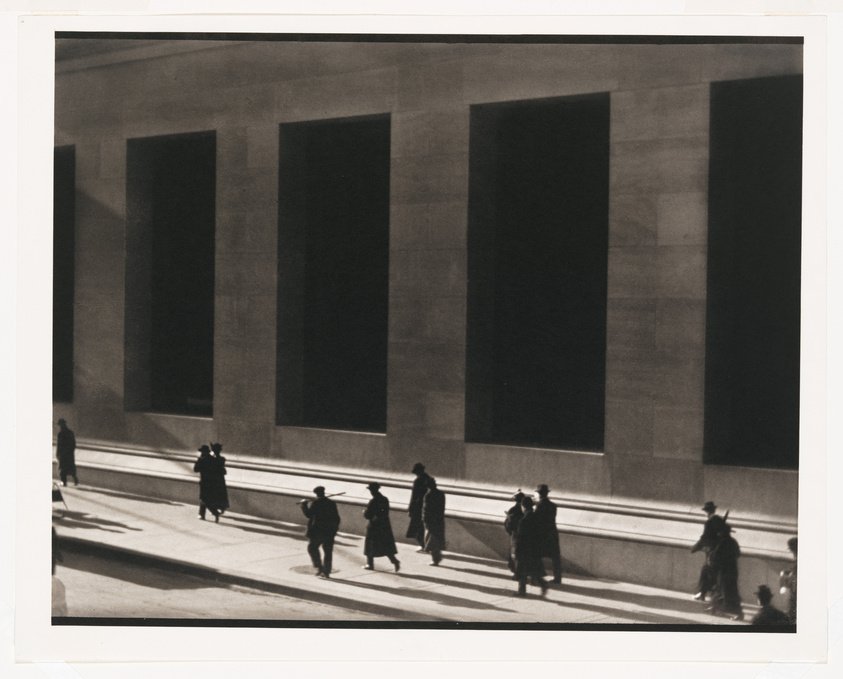A closer look at the various uses of photography through the nineteenth and mid-twentieth century within the context of photographic seeing, the rise of aesthetic modernism, and modern image-making.
SHOW-ME-WHAT-YOU-KNOW IN-CLASS ASSESSMENT #2
Instructions: Please answer each of the following questions in the booklet provided. Feel free to use first-person voice and make sure to write in complete sentences and paragraphs (no point-form please).
Italicized sentences and paragraphs in questions 1 and 2 below indicate additions I have made when adding these questions to this blog - as they were areas I did not resolve and finish when originally writing the in-class answers.
1) Identify and describe THREE ideas raised in the Charles Baudelaire reading that suggest WHY Baudelaire was critical of photography. This question assesses your understanding of a class reading.
Baudelaire was critical of photography as he felt the medium lacked any kind of imagination or sense of wonder that other mediums of artistic expression, such as painting, had. In Baudelaire's time, photographs existed in a kind of objective representation or truth, they did not leave room for subjective interpretation. At the same time, Baudelaire was concerned that other mediums could also loose their sense of imagination, stating how “Each day art further diminishes its self-respect by bowing down before external reality; each day the painter becomes more and more given to painting not what he dreams but what he sees. Nevertheless it is a happiness to dream, and it used to be a glory to express what one dreamt” (3).
Secondly, Baudelaire did not like how the medium had been directed at the masses. He found that it could be too easily be commercialized, as shown by Daguerre who sold his equipment and processes to anyone willing to pay. He also felt that the process of photography did not require a lot of skill or training, and it resulted in an end product that could be easily reproduced and widely distributed - resulting in a kind of overall laziness to the endeavour. As such, Baudelaire believed that the new medium was too easy for people to enter into, it was difficult to police the boundaries of who called themselves ‘an artist,’ thus resulting in photography having “…contributed much to the impoverishment of the French artistic genius…” (2).
Thirdly, Baudelaire… was worried that photography would encroach on the ability of people to recognize and appreciate works of art, asking: “Are we to suppose that a people whose eyes are growing used to considering the results of a material science as though they were the products of the beautiful, will not in the course of time have singularly diminished its faculties of judging and of feeling what are among the most ethereal and immaterial aspects of creation?” (3).
2) Look carefully at this Impressionist painting by Gustave Caillebotte titled PARIS STREET: RAINY DAY (1877). First, identify and describe where you see evidence of ‘photographic seeing’ in this artwork on the level of FORM (how it is composed and put together) and CONTENT (the story of what we are seeing). Second, refer to one idea by either Susan Sontag or Lazlo Moholy-Nagy that you also see operating in this picture. This question asks you to do a visual analysis of an artwork.
ARTIFACT 01 > Caillebotte, Gustave. “Paris Street; Rainy Day.” 212.2 × 276.2 cm (83 1/2 × 108 3/4 in.), The Art Institute of Chicago, 1877.
Formally, Caillebotte’s Paris Street: Rainy Day (1877) is a colour oil on canvas painting, which utilizes several photographic ways of seeing. Firstly, Caillebotte employs a pictorialist feel or style of photography with a soft, cloudy, pastel beige sky, with buildings disappearing into a kind of soft focus the farther they recede into the background. The painting feels wet and damp - there is a slickness to the cobblestones in how they have been rendered by Caillebotte. The painting feels like a snapshot of a random moment in time- with around a dozen individuals moving throughout the shown space, in and out of the frame. One person, his back to the viewer on the lower right hand side of the painting, is moving into the frame and is also partially cropped out of the frame. As this man enters the frame, a couple walks towards us to his left, and they are about to leave the frame as their legs are also cropped out of the frame. Their attention is focussed on something to their right, out of sight to us the viewer. All this feeds the CONTENT, the story of this mundane, banal moment, of a city street filled with everyday people. This is not royalty, history, or religion - it is similar to what we would encounter stepping outside.
In her piece, PHOTOGRAPHY WITHIN THE HUMANITIES, Susan Sontag speaks to the idea that “There are an unlimited number of photographs to take, every photograph feels that” (61) and she continues, explaining how for a writer, “There are not an unlimited number of things to write, except in a very cerebral sense… Every writer has to reach and is constantly aware of how basically it comes from inside; it all has to be transformed in the homemade laboratory that you have got in your guts and your brain” (62). With this idea, one can compare the prospects that a writer has as being similar to the prospects a painter like Caillebotte has - there isn’t an unlimited number of things to paint, and as Baudelaire would appreciate - the creativity for a painter in expressing what they see has to come from inside. In this sense, the ways in which a painter sees is not that different than how a photographer or a writer sees - as it all comes down to the choices they make. As Sontag notes how “…the world is really there; it is an incredible thing, it is all interesting and in fact, more interesting when seen through the camera than when seen wit the naked eye or with real sight. The camera is this thing which can capture the world for you… It enables you to transform the world, to miniaturize it.” Sontag then explains how she feels that writers and painters are not able to do this, but on that point I would disagree as painting, photography, and writing are all about making creative choices that express ideas and reveal the layers that exist in the world around us.
3) Look at these works of photography you were shown today by artists Alfred Stieglitz, Paul Strand, and Hannah Hoch. What is your understanding of why the photograph was the essential medium that these artists needed to use in order to express themselves as modern artists?
ARTIFACT 02 > Stiglitz, Alfred. “The Steerage.” 32 x 25.7 cm (12 5/8 x 10 1/8 in), Cleveland Museum of Art, 1907.
ARTIFACT 03 > Höch, Hannah. “Cut with the Kitchen Knife Dada Through the Last Weimar Beer-Belly Cultural Epoch in Germany.” Collage, mixed media, photomontage, 3' 9" x 2' 11 1/2", Neue Nationalgalerie, Staatliche Museen zu Berlin, Berlin, 1919-1920.
ARTIFACT 04 > Strand, Paul. “Wall Street.” Photogravure & Platinum Print, 13.3 x 16.5 cm (5 1/4 × 6 1/2 in), Philadelphia Museum of Art / Whitney Museum of Art, 1915.
Artists such as Stieglitz, Strand, and Hoch were modern artists as their work was rooted in the now, in the moment. Stieglitz and Strand used photos they took of specific moments in specific places to capture the feeling of that place. They likely moved through these spaces first before setting up their cameras to capture what caught their attention to create images that told specific stories about those places. Stieglitz conveys the crowded, claustrophobic feeling of people travelling across large distances. And in spite of the crowdedness of the scene, when one takes a closer look, many individual faces convey the feeling of being alone. By contrast, Strand also reveals a kind of loneliness, but here it is represented by the spaces between the dark, deeply contrasted shadows of people walking towards the light coming from the left. They cast loping shadows, and they exist below the cold, monumental, overpowering, and sterile strength of the concrete building towering above them, stretching upwards towards and beyond the top of Strand’s picture frame. The concrete feels smooth, the light hot. It’s a brooding image of an everyday scene. Finally, Hoch has also created a claustrophobic image of many people, compiled from imagery that also represents the everyday, taken from the found photos of leaflets, magazines, newspapers, and other photos she or her friends had taken. She used these modern moments of the now to create new narratives about what they represent, where each image is able to exist as individual pieces and as part of a larger whole in a piece that commented on and mocked life in post-war Weimar Germany.
4) Look carefully at this photograph by Lazlo Moholy-Nagy, titled Climbing the Mast (1928). Identify any THREE ideas from the Moholy-Nagy reading, “A New Instrument of Vision” that you can apply to your understanding of how to read and understand this Moholy-Nagy image. This question interprets how you have synthesized and understood today’s class discussion applied to an image.
ARTIFACT 05 > Moholy-Nagy, Lazlo. “Climbing the Mast.” Gelatin silver print, 35.4 x 28 cm (13 15/16 x 11 in.), Metropolitan Museum of Art, 1928.
Moholy-Nagy’s photograph, Climbing the Mast (1928) highlights many ideas discussed in his essay, A New Instrument of Vision. First, on page 92, he discusses photography’s ability to capture “…flowing light and richly graded shadows.” In Mast, we see a wide range of gradation, from the almost white, brightly highlighted areas of the sails, to the variety of shadows cast onto it by the figure and the ladder they are climbing, as well as the almost black cutout of the figure climbing the ladder which turns black as it rises above them. Secondly, on page 94, Moholy-Nagy discusses how “…new discoveries cannot… be refined to the mentality and practice of bygone periods.” With his image, he has the central figure occupying the top-left hand corner of the photograph, rising upwards - as opposed to a more central-axis that a more traditional image may have pursued (in fact, as shown in ARTIFACT 06, Moholy-Nagy explored more conventional angles that centred the figure before landing on more tightly cropped image presented in ARTIFACT 05). One can feel a kind of vertigo being right below the figure, looking up into the frame. It’s a composition that doesn’t look like the paintings or photographs that came before, or like the photos of the pictorialists. Finally, Moholy-Nagy speaks to the importance of having “…a knowledge of photography” which is similar to what Sontag described at the bottom of page 60 in her article. Both would acknowledge the tone needs to understand how to move through a photograph, to see the infinite possibilities behind its new ways of seeing.
ARTIFACT 06 > Moholy-Nagy, Lazlo. “Variations on Climbing the Mast.” 1928.
GRADE RECEIVED: B+ (78%)
COMMENTS: Very nicely done on questions 3 & 4. Some missing points in questions 1 & 2.









